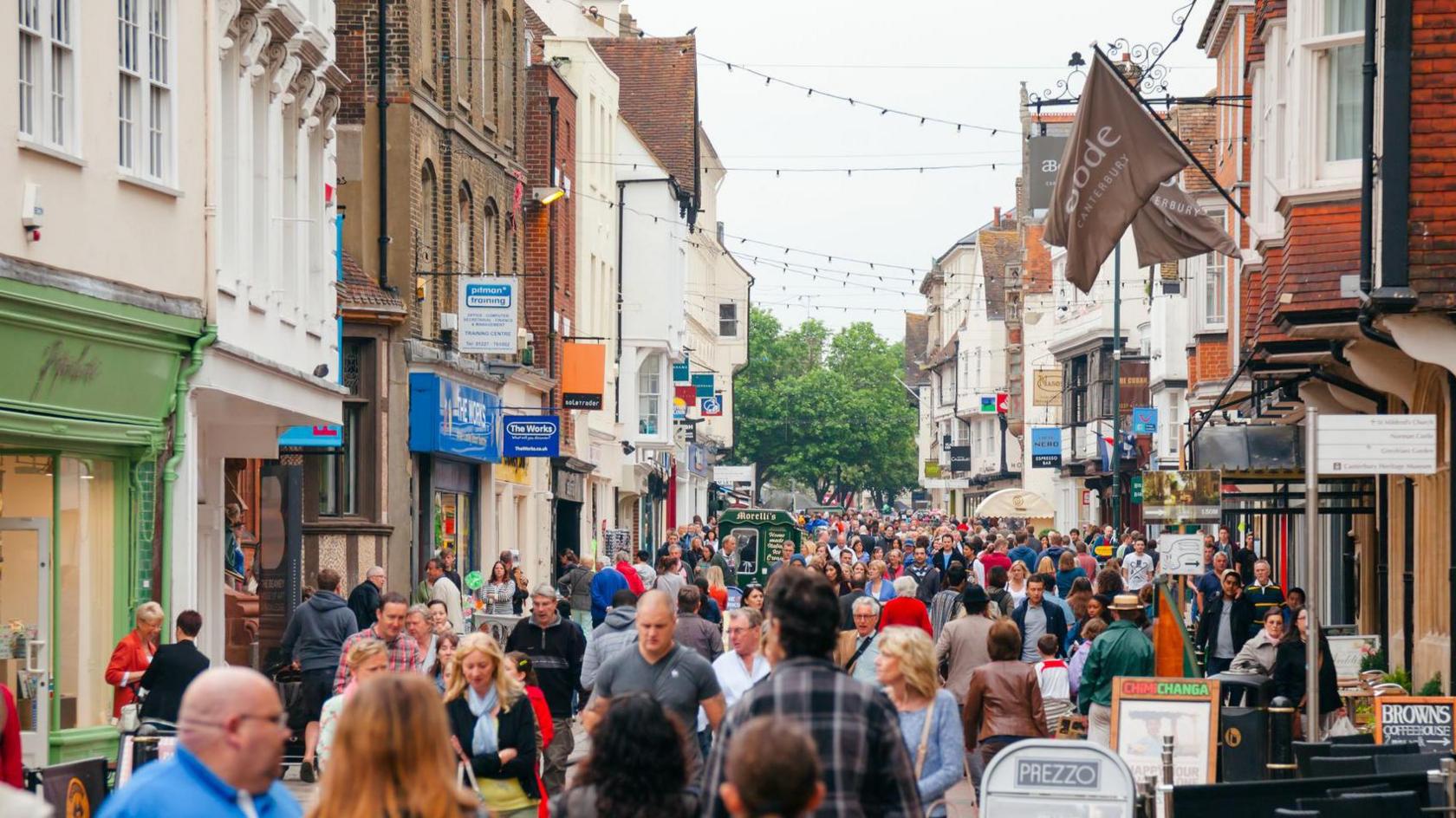Kent's population increases by 18% in 20 years

Kent's population has grown by almost a fifth in 20 years, found a report
- Published
The population of Kent has risen by almost a fifth in the last two decades while housing stock is insufficient to meet demand, according to a new study.
There are now 18% more residents than 20 years ago, with growth particularly high in areas such as Ashford, Maidstone and Swale, the 2025 Kent Joint Strategic Needs Assessment (JSNA) found.
The report, presented to the Kent Health and Wellbeing Board which accepted its contents, raised concerns that housing stock had not increased in line with the growing population, with a rise of 9% in the last 10 years.
The report said there was also a "lack of affordable housing" in the county.
The report found the county's population had grown by 7% over the last 10 years while average prices for housing increased by 15-30%, according to the Local Democracy Reporting Service.
The most affordable area was Dover, where median house prices are eight times the median salary.
In contrast, the most expensive area, Sevenoaks, saw the median house price at 14 times the median income.
The report also outlined housing challenges faced in Kent:
Just under 20% of the households (145,566) lived in the private rented sector in 2021.
There are 3,597 children who are homeless and living in temporary accommodation in Kent and Medway as of March 2024.
More than 26,000 households live in overcrowded accommodation, mostly rented.
Across the South East, over 10% of homes are non-decent according to the Survey of English Housing, which means not in a reasonable state of repair, hazardous or lacking in modern facilities.
Increasing older population means it will result in an increased need for adapted housing especially for those with physical disabilities.
Higher life expectancies
Female life expectancy was 83.3 years, compared to 83.1 years across England, according to the latest figures.
For men, it is 79.3 years in Kent - 0.2 years more than the English national average.
However, these numbers are lower in deprived coastal areas including: Thanet, Folkestone and Hythe, Swale, Dartford, Gravesham, Dover, and Canterbury.
The highest life expectancies were found in more affluent Sevenoaks, Tonbridge and Malling, Tunbridge Wells, Maidstone and Ashford.
The report, compiled by authors Dr Abraham George and Davinia Springer, also shed light on demographics across the county:
Kent is 10% whiter than other counties, with a white population of 83%
Out of 98 languages spoken in Kent the top five languages are: English 89.8%, Polish 0.7%, Romanian 0.6%, Nepalese 0.5% and Punjabi 0.3%.
In Kent, 48.5% are Christian, 40.9% declared no faith, 1.6% are Muslim and 1.2% Hindu.
HIV diagnosis rates in the county are also on the rise but only Gravesham and Thanet are classed as "high prevalence" areas, defined by 2-5 people in 1,000 having the virus.
Follow BBC Kent on Facebook, external on X, external and on Instagram, external. Send your story ideas to southeasttoday@bbc.co.uk, external.
Related topics
Related stories
- Published24 April 2024

- Published18 April 2024

- Published28 June 2022
